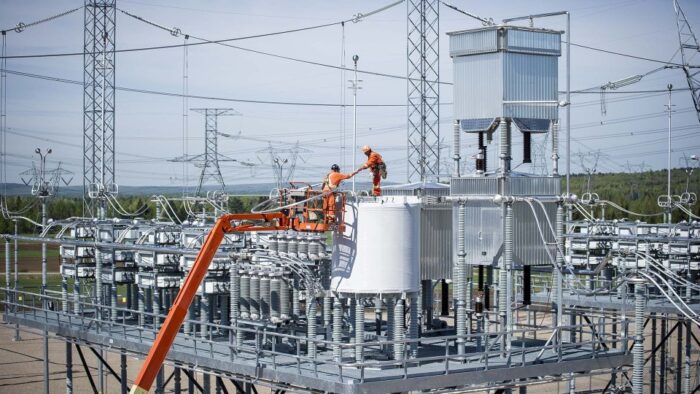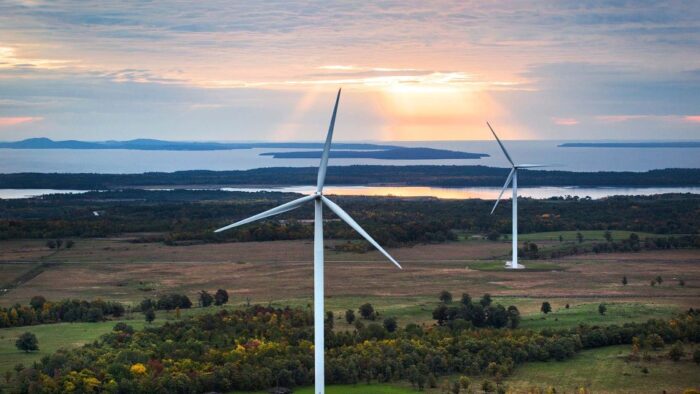NUR-SULTAN – The decarbonization of the global economy is becoming increasingly urgent, particularly for major energy producers such as Kazakhstan. The country announced plans to achieve net-zero carbon emissions by 2060.

President of General Electric (GE) in Russia and CIS Bela Ferenczi.
During the plenary session of Kazakhstan’s Foreign Investors’ Council, President Kassym-Jomart Tokayev hosted a discussion with business leaders and members of government on approaches and technologies that can help the country to reduce emissions
Bela Ferenczi, President of General Electric (GE) in Russia and CIS, took part in the discussion, focusing on the decarbonization of the power sector. Ferenczi spoke about the results of this important dialogue in a recent interview with The Astana Times.
GE recently took part in the FIC plenary session devoted to decarbonization, chaired by President Tokayev. What were the main topics on the meeting agenda?
GE is proud to have partnered with the Republic of Kazakhstan on key infrastructure projects over the past decades and to have served as a long-standing member of the foreign investors’ council. We believe it is important to maintain a dialogue between government and business leaders in vital sectors for sustainable economic development, and the power industry is foundational to this. I am grateful to President Tokayev for the opportunity to take part in a productive dialogue on decarbonization – a topic on which we are well-placed to share our experience innovating and deploying leading power and renewable energy technologies. We discussed approaches and solutions to help Kazakhstan maximize the decarbonization potential of key energy sector projects in pursuit of sustainable development goals.
How is Kazakhstan positioned to decarbonize and establish sustainable power infrastructure today?

The global energy crisis has made the challenge of decarbonization and energy transition strategy more complex. However, as a country with significant energy resource potential, Kazakhstan’s power industry is well-positioned to make significant gains in energy efficiency and decarbonization – while meeting rapidly rising demand. The country’s aging power infrastructure has been operating for an average of 40 years and the majority is still coal-fired, which is much more carbon-intensive than natural gas. This need for reinvention creates ideal conditions for structural change – using advanced technologies that meaningfully reduce emissions. The planned gas power plant in Almaty is a good example of a project with significant potential to address the environmental challenges in the region.
What does GE propose to help Kazakhstan to reach its decarbonization target?
Kazakhstan’s supply of power to consumers should be secure, equitable, and sustainable. This can be achieved through a combination of decarbonized baseload generation – using gas and nuclear power, and renewable energy capacities – including zero-carbon wind power and hydropower; harnessed by the frontier grid and digital solutions. GE provides a full lens of these technologies which today deliver 30 percent of global power generation and equip 90 percent of utilities, while 40 percent of electricity is touched by our software. Our heritage and portfolio help us to partner with countries to select the best approach, technologies, and roadmap for their energy transition. Kazakhstan should act swiftly to modernize existing assets and build new backbone power facilities to keep the pathway open to net-zero by 2060. A structured, transparent approach and open competition will be vital to attract foreign investment and ensure the best available power technologies are used, and we welcome the government’s action through changes to project selection procedures recently initiated by the Ministry of Energy.

Why is Kazakhstan looking to increase gas power capacities, while in Europe the recent focus has been more on renewables and even coal is making a comeback?
Coal must be phased down to decarbonize the power industry – the recent slowdown in Europe is a temporary effect of the energy crisis. Gas is the fuel of energy transition. It is a force enabler that delivers reliable, flexible baseload power while supporting grid stability for the connection of renewable capacities. The most efficient and powerful solutions today are fuel-flexible, combined-cycle gas turbines that recover steam to generate up to 50 percent more power using the same fuel, greatly increasing environmental performance. Combined cycle plants cost more to build but deliver lower lifecycle costs, increasing investment appeal and ensuring lower long-term electricity prices for consumers. To illustrate, a 2.2 GW combined cycle plant using our HA turbines was launched recently in Malaysia. It can generate around 10 percent of the country’s power needs, helping to meet growing demand and achieve the target of retiring 7 GW of coal power by 2033. Gas power also has significant pre-and post-combustion decarbonization potential. We are innovating in retrofittable carbon capture, utilization, and storage (CCUS) solutions with technology partners in the US and Europe to enable gas power plants to achieve decarbonization of up to 95 percent. We also developed a roadmap for the next decade enabling our gas power technologies to transition to 100 percent hydrogen, for carbon-free baseload power and peaking capacity.
Beyond gas, the government is exploring a plan to build a nuclear power plant that has prompted widespread debate. What are the benefits of nuclear power?
The plan to build a nuclear plant in Kazakhstan will be vital for meeting the long-term decarbonization target. It would not be possible to meet the growing demand for power and decarbonize the sector using renewable energy alone, as a foundation of balancing capacities and an advanced grid must be built first. Nuclear technology is safe and highly efficient – helping to avoid 60 gigatons of carbon emissions globally over the past half-century. GE has 60 years’ experience equipping full-scale nuclear power projects around the world with our low-speed steam turbine technology that ensures world-class operational safety. This is a robust, proven solution that is installed at half of the world’s nuclear power plants. This includes the latest generation III+ plants, such as Akkuyu Nuclear Power Plant currently under construction in Türkiye – which will feature four GE Arabelle units, the largest turbine in the world. Innovative Small Modular Reactor (SMR) technology like the GE Hitachi BWRX-300 can also play an important role, with sizing flexibility and lower operating costs.
So where do renewable energy and grid technologies come in?
Renewable energy technologies like wind turbines have passed the tipping point in terms of power output and cost. We welcome Kazakhstan’s ambitious goal to increase the share of renewables to 15 percent of the energy mix by 2030 – and look forward to delivering best-in-class solutions to help the country achieve this. We have already deployed our leading Cypress onshore wind turbines at Badamsha Wind Farm, which provide the potential to avoid 173,000 tons of carbon emissions per year. As renewable energy capacities grow, and the mix of power sources becomes more complex, advanced grid technologies are needed to manage and store power to meet demand. This includes frontier physical and digital solutions like state-of-the-art digital substations, high voltage direct current (HVDC) transmission systems, Advanced Distribution Management Solution (ADMS), and energy storage solutions. We also recently unveiled the world’s first high voltage equipment using our latest g3 technology to decarbonize grids, reducing their carbon impact by 99 percent.
What other additional areas for collaboration did you discuss during the FIC Plenary session?
Beyond the energy sector, we discussed developing our long-standing strategic partnership in healthcare. GE participates in key state programs in oncology and cardiology, and the construction of new medical centers via public-private partnerships. We have delivered more than 2,700 GE medical devices including СT and MRI scanners, mammography, and ultrasound systems. We also equipped the first hybrid operating room in Central Asia and supported the digital transformation of Kazakhstan’s healthcare system, enabling remote consultations that improve patient outcomes in complex cases. During the session, we discussed opportunities to localize the production of GE’s advanced medical equipment in Kazakhstan – to secure the supply of world-class equipment for the national healthcare system and enable exports throughout the single market of the Eurasian Economic Union. My family and I lived in the country for several years, so I feel particularly blessed to have the opportunity to help share these technologies that save lives in the moments that matter, while building a sustainable future for Kazakhstan through the energy transition.

